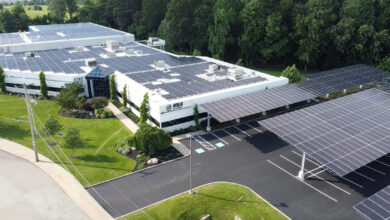Sublimation is the transition of a substance directly from the solid to the gas state without passing through the liquid state. When speaking of dye-sublimation, the solids are the dye inks. During sublimation, the inks are vaporized and infused into various substrates. Dye-sublimation is a rapidly growing methodology of printing that is being adopted by many. Current printers creating direct prints or textiles, those looking for new business opportunities, and even educators and influencers can use dye-sublimation for flat, rigid materials to increase profit by adding exciting new products. Once one has committed, how can a workplace be set up for hard surface sublimation?
Software
Dye-sublimation begins with the imagery. Once an image is selected, upload it into a photo editor, like Adobe Photoshop. Once the imagery is cropped to desired dimensions and look, it can be dropped into a raster image processor software or RIP. A RIP software converts your computer files into a bitmap that a dye-sublimation printer can understand.
RIP software mirrors the image so that printed transfer paper can be secured to a sublimation blank for sublimation. This process is performed using heat tape. Hard surface sublimation materials include metal, wood, fiberglass reinforced plastics, and even tabletops. There are many options available, so research what offerings you would want to print.
Sublimation printer
The printer is a critical piece of equipment that should include dye-sublimation inks and paper. Different sizes and makes of printers are available, and you want to consider the maximum dimensions of the products you want to customize. Printers can be four- or eight-color in most instances. When you select the perfect printer for purchase, have a certified technician install and set up your printer to ensure consistent, quality printing.
Heat press
The final large ingredient is the heat press. Like dye-sublimation printers, there are many different types of heat presses. Manual or pneumatic? Again, consider the larger product/panel you want to press. Plan your equipment installs and take into consideration the size of your workspace. A heat press is a large investment and should be installed and set up by a certified professional.
Sublimation supplies
Lastly, basic sublimation supplies are needed. Scissors, heat tape, cleaning cloth, all-purpose cleaner, heat gloves, and a cooling rack should be gathered and kept in your workspace until required. Once you get fully set up for hard surface sublimation, the actual dye-sub process is not complicated. You can document precise “recipes” to use time and time again after you’ve performed appropriate testing. Dye-sublimation can provide a fun, creative way of increasing your revenue and profit.




